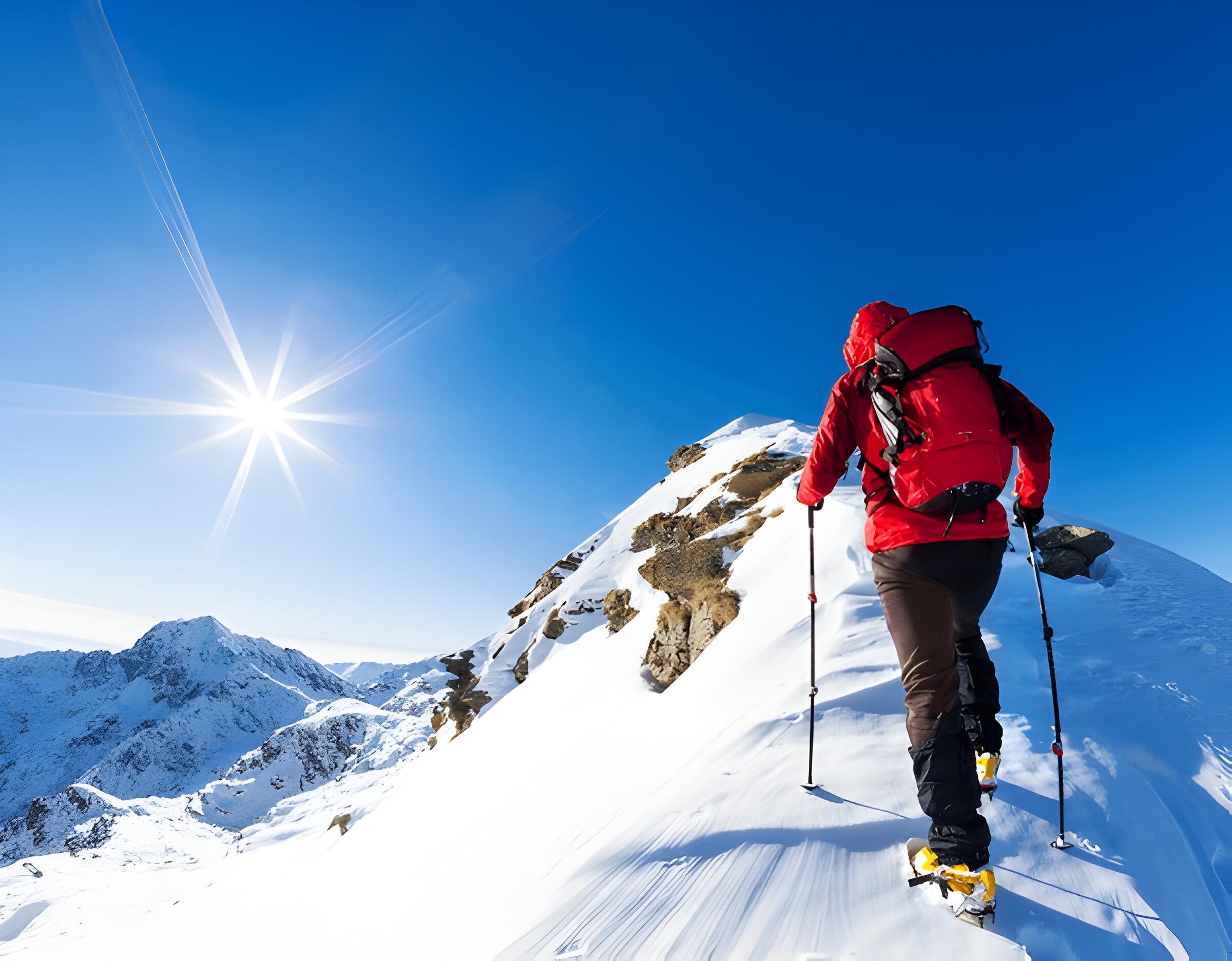Island Peak Climbing: A Gateway to Himalayan Adventure

Situated in the heart of the Everest region, Island Peak (Imja Tse) provides a quintessential Himalayan journey that perfectly combines the thrill of mountaineering with the breathtaking grandeur of the world's highest mountains. Island Peak, at 6,189 meters (20,305 feet), is a popular climbing location for trekkers looking for their first high-altitude encounter in the Himalaya. Whether you're a novice mountaineer or a seasoned trekker, the route to Island Peak offers an amazing experience.
Why Island Peak?
Island Peak earned its name from Eric Shipton's 1951 Everest expedition, as it appeared like an island in a sea of ice when viewed from Dingboche. It’s a relatively non-technical climb, making it an excellent choice for novice climbers looking to test their skills at altitude. The climb provides a perfect stepping stone for those aiming to tackle more challenging peaks like Ama Dablam or even Mount Everest.
The Journey to Base Camp
The adventure begins in Kathmandu, where climbers catch a flight to Lukla, the gateway to the Everest region. From Lukla, the trek to Island Peak base camp winds through the famous Khumbu Valley, passing through iconic locations such as Namche Bazaar, Tengboche, and Dingboche. Along the way, trekkers are treated to breathtaking views of Everest, Lhotse, Nuptse, and other Himalayan giants.
The trek is not just about climbing; it’s a journey through Sherpa culture and Buddhist spirituality. Visiting monasteries, interacting with local communities, and experiencing the serene landscapes of the Khumbu region add a rich cultural dimension to the adventure.
The Climb
Reaching the summit of Island Peak requires a good level of physical fitness and basic mountaineering skills, such as using crampons, ice axes, and ropes. The climb from base camp typically involves an early morning start to reach the summit before the afternoon winds pick up.
The ascent starts with a steep, grassy slope leading to the snowline. From there, climbers navigate through a glacier, where crevasses and seracs add an element of excitement to the climb. The final push to the summit involves ascending a 100-meter headwall, which is the most technically challenging part of the climb. Fixed ropes assist climbers in scaling this section, and once on top, the reward is a stunning 360-degree view of the surrounding peaks, including the majestic Everest.
Best Time to Climb
The best time to climb Island Peak is during the pre-monsoon (March to May) and post-monsoon (September to November) seasons. During these periods, the weather is generally stable, and the views are spectacular. The clear skies offer unobstructed vistas of the mountains, and the trail is less crowded compared to the Everest Base Camp trek.
Preparation and Training
While Island Peak is considered a trekking peak, proper preparation is essential for a successful climb. Training should focus on building cardiovascular endurance, strength, and stamina. Familiarity with basic mountaineering techniques is also crucial. Joining a mountaineering course or participating in lower-altitude climbs can be beneficial.
Acclimatization is key when trekking in high altitudes. Most itineraries include rest days at Namche Bazaar and Dingboche to allow your body to adjust to the thinner air. Drinking plenty of water, maintaining a steady pace, and listening to your body’s signals are vital for avoiding altitude sickness.
The Experience
Climbing Island Peak is more than just reaching the summit; it’s about immersing yourself in the adventure. The sense of achievement, the camaraderie with fellow climbers, and the profound connection with nature make this journey truly special. The early morning stars, the crunch of snow underfoot, and the first rays of sunlight illuminating the peaks create moments that remain etched in memory long after the climb is over.
Conclusion
Island Peak offers a perfect blend of adventure, culture, and natural beauty. It’s an ideal climb for those looking to step into the world of Himalayan mountaineering. The experience challenges you physically and mentally, but the rewards are immeasurable. Standing on the summit, surrounded by the grandeur of the Himalayas, you’ll feel a profound sense of accomplishment that only the mountains can offer.
So, if you’re dreaming of an adventure that combines the thrill of high-altitude climbing with the serenity of the Himalayas, Island Peak is calling your name. Prepare, train, and embark on a journey that promises to be the adventure of a lifetime.
- Art
- Causes
- Crafts
- Dance
- Drinks
- Film
- Fitness
- Food
- Games
- Gardening
- Health
- Home
- Literature
- Music
- Networking
- Other
- Party
- Religion
- Shopping
- Sports
- Theater
- Wellness
- IT, Cloud, Software and Technology


